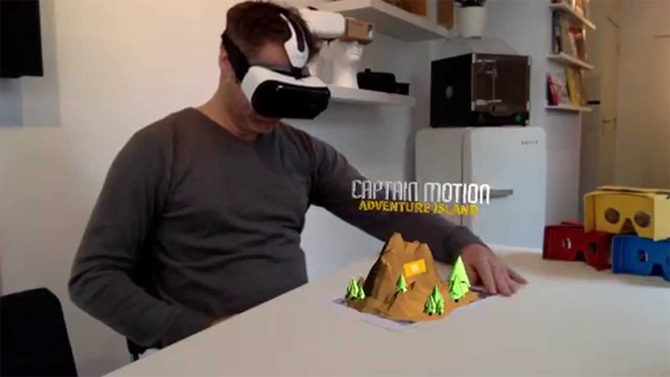Is mixed reality going to impact the way you communicate and collaborate in your workplace?
Audio : Listen to This Blog.
Is mixed reality going to impact the way you communicate and collaborate in your workplace?
Having to wake up to a long list of reminders about upcoming deadlines. Seeing your inbox overflowing with emails every single morning you log in to your workstation. So you have targets to meet, emails to reply and no time in your hand. There are many such instances that make the workplace synonymous with stress. In the midst of all this, you get a call from a client halfway across the globe regarding a machine that has broken down and needs inspection. Can you tackle all of these with one single solution? A solution that makes your work simpler? A solution that would make the workplace more convenient? Technology has an answer for you and that answer goes by the name “Mixed Reality”.
So there was Virtual Reality and then Augmented Reality- now what is this Mixed Reality?
Like the name indicates it is just a balanced hybrid giving you the best of both real and virtual worlds. While virtual and augmented reality concepts are great, taking all that they offer and making them more practical for actual application without interrupting the existing systems is what mixed reality does and this is what makes it even greater than the previous technologies.
Are you early or late?
With sophisticated technologies like VR, AR and mixed reality, the key is to strike an equilibrium position. While there might be one industry that might skyrocket with the use of these technologies, there might be some that only need bits and pieces of it. Like Gartner’s Brian Blau says, “Make sure you remove the hype bias and do what is right for your business”. Totally ignoring the concept of mixed reality would leave you lagging behind your competitors. At the same time, giving in to the hype and investing too much into such technologies while they are still in their nascent stages would prove heavy on your capital. So coming back to mixed reality, it is definitely not early to start as it has already crept into several workplaces in several forms.
Analyze your existing processes to find the factors that are making work boring or overwhelming. These would be your actual target areas. The next step would then be to figure out how and how much of mixed reality technology you could use to make workplace better. Better workplaces mean happier employees and thus better productivity and thus- a win-win situation.

Communicate better with mixed reality applications:
Let’s take the same example of where you get a machine break down complaint to resolve, at a client’s place far off. Even the highest resolution images nor the clear verbal description can actually help an engineer understand the problem like an actual physical examination would. With mixed reality in place, you could simply don the headset and virtually view the machine half way across the globe without having to fly there yourself. This is what shared virtual environments can offer. So the client would be able to communicate better the problem at their end and you would be able to, with gesture and visual responses, give a resolution. This not just makes communication better, but also makes it quicker.
Drawing the perfect triangle for the VAK system:
Taking into account learning styles, the employees in a team might be the opposite poles in it. As each one’s learning style differs striking an equipoise communication channel is always a task in a workplace especially in one with huge teams and cross functional teams. VAK is one learning system that is known to bring in the perfect style that would suit “Visual, Auditory and Kinesthetic” learners. Mixed reality is the best tool to implement a VAK system in office communication as well. How do you triangulate equilaterally so as to get every member of the team to listen and communicate their best with mixed reality? The visual learners, by getting a slice of the virtual environment perceive the issue better, for the auditory learners, the audio responses in the virtual environment along with noise canceling headsets blocking out other distractions would prove useful. And finally the immersive experience that mixed reality offers would also keep the kinesthetic learners happy as they can do so much with simple gestures.
Collaborating better to make autonomous workplaces:
Now that businesses understand that not everyone works the same way, not everyone displays their utmost productivity in one particular shift timing or workplace environment, they are becoming more open to telecommuting or remote support. Talk about remote support, what better than mixed reality incorporation to make it more coherent and effective? Remote support is beneficial not just for the employees but also to the businesses to a great extent. With an ever increasing work force, creating an expanding workspace and backing it up with all the right resources is a heavy bet. Virtual workplaces are much more affordable and the returns you get for this, are tremendous, besides you also have happy employees who get to choose their work environment and work timing as well. Collaborative workplaces are the future and the future is already here. You could now have a team sitting in different corners of the world combined by the magic of mixed reality and hold virtual conferences. Mixed reality gets a brownie point here because all the efforts to be taken in arranging the conference room, sending out email invites for the meeting and reporting the minutes of the meeting can all be done automatically.
So there you have it – a mere snippet of what mixed reality could do to the communication and collaboration in your workplace. It is up to you to gauge the needs of your business, and incorporate a plan accordingly.

